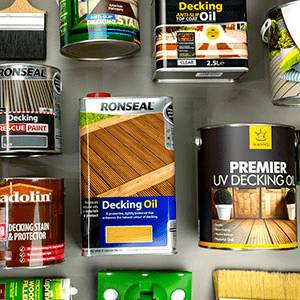Wood Cleaner FAQ's
What is the best way to clean and maintain my floor?
A concentrated wood cleaner can be mixed with water then applied by slightly dampening a cloth or mop. It is important to let the cleaner and not the water do the work. Using too much water on a varnish, wax or oil will take a little of your finish off each time it is used, which in turn means your floor will have a shorter life. Visit our Wood Cleaners page to see our range of easy to use products.
What should I use to clean decking?
As with any interior wooden floor, decking should be cleaned and maintained on a regular basis to keep it in tip top condition. There are some great decking cleaners that have been developed to keep decking clean all year round. Please refer to our blog post on how to clean decking for more information, hints and tips.
Can I use a steam cleaner to clean wooden floors?
Although steam cleaners are routinely advertised for cleaning wooden floors we strongly advice against this. The high-pressure steam introduced by steam cleaners is likely to degrade, damage or strip any wood finish over time. There's also a danger that the steam can penetrate the wood of the floor, potentially causing swelling, warping or splitting of the wood. For this reason, we always recommend that wooden floors are only dry swept, vacuumed or cleaned with a slightly dampened cloth or mop, using only a dedicated, Ph balanced wooden floor cleaner.
How do I carry out day to day cleaning of wooden floors?
For day to day cleaning of wooden floors we recommend using a vacuum cleaner then dry sweeping with a microfibre cloth or mop. Vacuuming first picks up any loose grit and other sharp particles that could potentially scratch the surface of the floor finish. Using a dry microfibre cloth or floor mop that is statically charged will help to pick up any remaining dust or fluff from the floor. As part of a weekly cleaning program, wooden floors can be cleaned with a slightly dampened (never saturated or wet) cloth or mop in conjunction with a dedicated floor surface cleaner.
What is the best way to treat mould on my oak porch?
Barrettine Mould and Mildew Cleaner is the perfect treatment for any interior or exterior mould. It's also available in a handy spray: Barrettine Mould and Mildew Spray.
Once mould has been eradicated, make sure the area is treated with a suitable wood preservative, to make sure the mould doesn't return.
Will a mould, mildew or algae cleaner damage my plants?
Yes. These products are designed to destroy organic life and make sure they don't come back. The surrounding plants and grass will suffer the same fate if they come in contact with these types of products.
How do I clean oiled surfaces?
Oiled surfaces should be cleaned with a gentle, water-soluble cleaner. Everyday detergents contain Lipases, a chemical that is designed to break down natural oils and fats, so these should be avoided.
Wood Cleaner related blog posts
Disclaimer: Whilst every attempt has been made to provide product information that is as accurate as possible, it's important to clarify that trees and the wood that they produce can be affected by many factors. For example, the same species of tree grown in the same wood, even in close proximity, will be affected by age along with the amount of sunlight and water they receive. Other naturally occurring biological and environmental factors will also influence the density and grain of the wood as well as the moisture and oil content of the timber. No two trees are the same, meaning each piece of wood has the potential to look and react differently to the same wood finish. For example, product adhesion, colour variations, absorption rates and sheen levels. It is for this reason that we always strongly recommend carrying out test areas before starting any project


